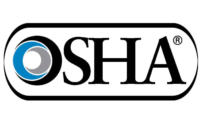New Year’s Resolutions to improve safety at your workplace

Lose weight. Quit smoking. Finally finish that home repair to-do list. A new year is perceived by many as an opportunity to make changes that will lead to positive changes in one’s health, relationships, environment, etc.
The start of a new year is also a good time for safety professionals to take stock of the safety status quo at their company, and find ways to fix problems or to take the company’s safety culture to the next level. Here are ten suggestions for New Year’s resolution for safety professionals:
- Work with Human Resources to make sure the right people are hired. Not only do prospective employees need to required training, education and skills for the job that’s being filled, they need to be able to work effectively with others. A background check that includes social media postings may uncover a propensity for hate speech or other forms of hostility and could indicate a potential for workplace violence. Read more on how to spot the warning flags.
- Work closely with new workers to ensure that they are aware of safety procedures. Check in with them after 30 days to assess their adherence to and understanding of company policies.
- Review your company’s safety training. Is it effective? Does it need freshening up? Consider implementing Visual Literacy skills in your training sessions. Here’s how it works.
- Consider using incentives – but use them the right way to get the results you want. Don’t make the mistake some companies do of rewarding production over safety.
- Take steps to limit ergonomic injuries. They may not be as dramatic as other types of workplace injuries, but MSDs, carpal tunnel syndrome and other forms of injury caused by lifting wrong or repetition can result in lost time and affect productivity.
- Make sure you and at least some workers are trained in basic first aid, AED use and two-step CPR. A recent poll found that most Americans are not prepared to handle a medical emergency.
- Education yourself about suicide prevention. Whether a suicide takes place in the workplace (and that does happen) or at home, if an employee you supervise is at risk, you can intervene and make sure that person gets the help he or she needs. Here’s how.
- If your company doesn’t have a workplace wellness program, start one. Think small businesses can’t manage a WWP? Think again.
- Refresh your knowledge of PPE standards. Requirements for foot protection, FR clothing and electrical safety are regularly revised. Are you up to date on them?
- Pay attention to your own safety, health and well-being. A safety professional has a tremendous responsibility: to make sure employees go home at the end of the day or shift unharmed. One way to do some self-care is to practice mindfulness, which can help you to feel less overwhelmed by and anxious about your duties and better able to cope with negative thoughts.
Looking for a reprint of this article?
From high-res PDFs to custom plaques, order your copy today!









